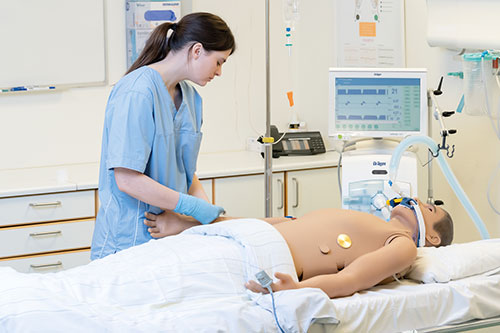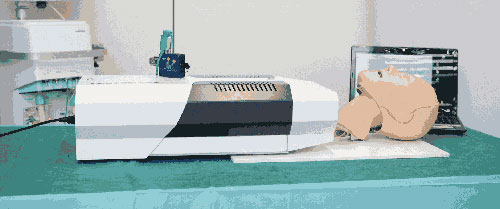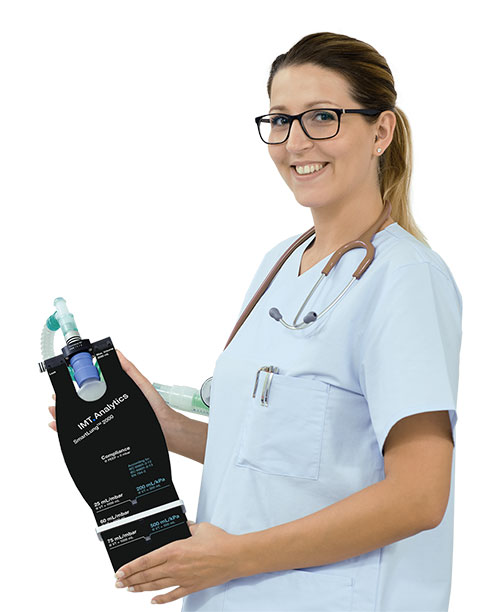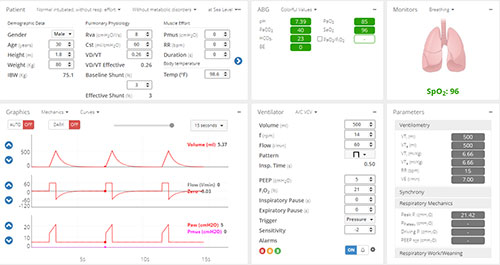Challenges and Future
The Evolution and Future of Lung Simulation in Healthcare
Medical simulation has advanced substantially in the last few decades, particularly in critical care and pulmonary medicine. A noticeable change has occurred from basic training aids to sophisticated, high-fidelity patient or lung simulators. Significant advancements in lung simulation, a vital component of this area, have resulted in safer and more effective patient care. This blog article analyzes the history of medical simulation, focusing on lung simulation, the technologies available now, and their potential benefits.
A Brief History of Medical Simulation
The concept of critical care simulation dates to the late 1950s, drawing inspiration from pilots' use of flight simulators. The aim was to provide a secure environment for healthcare professionals to practice life-saving techniques without endangering patients. This initiative led to the development of lifelike mannequins, such as Resusci Anne, designed explicitly for CPR training. Over time, technological advancements created more realistic simulators, enabling healthcare providers to prepare for various medical scenarios.
In the late 1980s and early 1990s, interest in simulation-based education returned, leading to the widespread adoption of highly realistic patient simulators in medical training programs. These simulators have now become integral to training programs for respiratory and critical care medicine professionals.
The Emergence of Lung Simulation
Lung simulation is a medical simulation that replicates the functions of the human respiratory system. Its purpose is to assist healthcare professionals in improving their skills in managing complex breathing and ventilation issues. Early lung simulators were rudimentary and focused on illustrating basic mechanical ventilation and breathing mechanisms.
As medical expertise and technological capabilities progressed, lung simulators evolved into sophisticated tools that accurately mimic various aspects of human respiratory and lung function. They now replicate intricate details such as airway resistance, compliance settings, diverse breathing challenges, and how a patient's breathing interacts with mechanical ventilator systems.
Current Lung Simulation Technologies
Advanced lung simulators provide fundamental features in medical education and clinical practice today. Leading technologies in lung simulation include:
High-Fidelity Mannequins:
These simulators accurately replicate the human respiratory system and can simulate various lung conditions, such as asthma, COPD, and ARDS. This allows healthcare professionals to practice managing these conditions in a controlled environment. Examples of such simulators include the SimMan and HAL series.
High Fidelity Lung Simulators and Test Lungs
Besides advanced manikins, high-fidelity lung simulators like the Test Chest or Ingmar Medicals ASL5000 are crucial in respiratory training and research. These devices are designed to replicate most of the physical properties of human lungs, offering a tangible and precise way to test and calibrate ventilators and other respiratory equipment. The Test Chest, for example, is a sophisticated simulator that mimics both the physiological and pathological aspects of lung function, allowing for the simulation of various respiratory conditions.
Similarly, the SmartLung series from IMT Analytics provides a range of models that can simulate different levels of lung compliance and resistance, making them invaluable for training healthcare professionals in mechanical ventilation techniques. These test lungs are especially useful in clinical settings where precise control over ventilation parameters is critical, providing a practical and hands-on approach to understanding lung mechanics and improving patient care.
Computer-Based Lung Simulators
These simulators, such as the Xlung or the LungSim™ software, offer detailed, computer-generated lung mechanics and physiology simulations. They are beneficial for understanding mechanical ventilation, allowing users to adjust various ventilation parameters and observe real-time effects on lung function.
Virtual Reality (VR) and Augmented Reality (AR) Simulators
Emerging VR and AR technologies provide immersive environments where users can interact with virtual patients and devices and perform complex procedures without physical simulators. Although still in an early stage, this technology holds exciting promise for the future of medical simulation.
Benefits of Lung Simulation in Healthcare
Using lung simulation in healthcare offers numerous benefits, particularly in education, patient safety, and clinical outcomes.
The use of lung simulators in healthcare offers several key benefits:
Enhanced Learning and Skill Development:
Lung simulators provide a risk-free environment for healthcare professionals to practice and improve their skills. They allow for repeated practice of complex procedures without harming patients.
Improved Patient Safety:
Simulation-based training reduces the likelihood of errors and incidents when performing procedures on human patients, ultimately leading to better patient outcomes.
Interdisciplinary Training:
Lung simulators facilitate interdisciplinary training, allowing healthcare professionals to work together in a simulation setting to improve communication and teamwork in real-life scenarios.
Customization and Flexibility:
Modern lung simulators offer a high degree of customization, ensuring that trainees are exposed to various clinical scenarios and rare cases, adapting to different educational needs.
Data-Driven Feedback and Assessment:
Advanced lung simulators provide immediate feedback on performance, allowing for the assessment of trainees' skills and progress over time.
Challenges and Future of Lung Simulation
Simulation models for lungs have progressed but face various obstacles that impede their efficiency. Existing simulators often struggle to mimic the complex nature of human lung mechanics and physiology, such as dynamic behaviors, disease progression, and interconnections with other simulation devices. Moreover, they may feature high expenses and limited compatibility with other simulation platforms, reducing accessibility and usability.
Continuous exploration and innovation are vital to advancing lung simulation technology and offering healthcare professionals, researchers, and manufacturers more comprehensive training and testing opportunities.
As technology improves, we expect better physical, technical, and virtual reality simulations, improved data analysis methods, and more simulation use in medical training.
However, more research is needed to prove that simulation training is practical and makes a difference in healthcare. As lung simulation improves, it will become essential to training and working in healthcare.
In conclusion, lung simulation aligns with the ongoing efforts to make healthcare safer and to improve medical education. The field has come a long way from basic simulators to advanced ones, which provide a secure way for staff to practice and improve patient outcomes and teamwork in healthcare. As lung simulation continues to improve, it offers exciting possibilities for advancing respiratory and critical care medicine.
With new ideas, lung simulation is expected to become even more crucial in advancing healthcare and changing how healthcare workers are trained and patients are cared for.

Laerdal SimMan Critical Care

Neosim Test Chest

IMT Analytics SmartLung



